Another ‘Lockdown’ project. An alphabet of engines, stations and remains of places I have visited over the years.
A is for Advanced Passenger Train.
This was a train capable of high speed due to ’tilting’ round bends. A design that started in the ’60s resulted in three trains sets operational by 1979 and running a passenger service briefly in 1981. They ran again in 1984 but by then the HST’s had proved their worth and the APT was abandoned. Some of the technology was sold to Italy and now we have Italian designed tilting trains on the network!
The press had a field day with the problems and I have always been very amused by the Private Eye cover below.
My photo was taken at Locomotion in Shildon where it is not well displayed.
B is for Beddgelert
The Welsh Highland Railway is one of my favourite lines and will appear here a few times I expect. Formed in 1922 by merger of North Wales Narrow Gauge Railway and the Porthmadog, Beddgelert and South Snowdon Railway it ran from Dinas – south of Caernarvon -to Porthmadog.
It was never profitable and became insolvent very quickly and trains ceased in 1937.
The long protracted battle to reopen it would take pages to recount, but rebuilding began in 1997 and finished in 2011. The northern section from Dinas to Caernarvon is on the track bed of the old LNWR.

Beddgelert station is roughly on the original site behind the Goat Hotel.
C is for Chesterfield
My home town and where I started trainspotting in the late 1950’s. A bridge over the Great Central line from Nottingham to Sheffield provided a perfect view of the London to Sheffield Midland line. In the days of steam Jubilees, Patriots, and occasional bigger engines were our main spots.
There was a third line into Chesterfield Market Place on the Lancashire, Derbyshire and East Coast Railway which did not reach either Lancashire or the East Coast! Closed in the 50’s but the enormous brick structure of Horns Bridge remained for many years until it was demolished to make way for a roundabout!
The picture is of a Class 60 freight loco passing through the station.
 The town was also home towards the end of his life of George Stephenson of Rocket fame.
The town was also home towards the end of his life of George Stephenson of Rocket fame.
D is for Ddualt Deviation.
When re-opening of the Ffestiniog Railway by preservationists was proceeding, the line could not be opened to Blaenau Ffestiniog as a considerable length of track was under water following completion of a new reservoir. Llyn Ystradau is part of a pumped-storage hydro-electric scheme.

The old track bed can be seen in the photo above. It rose gently upwards towards Blaenau. The Deviation to take it north of the reservoir required a much steeper ascent and a spiral deviation was constructed, mostly by volunteers, over 13 years from 1965-1978. This included a new tunnel blasted out by Cornish miners. This is the only spiral in the UK though there are many on the continent.
The spiral can be seen in this photo.
E is for Ecclesbourne Valley Railway.
This is a 9 mile heritage railway from Duffield (where there is a connection to the Derby to Matlock line) to Wirksworth. From Wirksworth there is a small additional branch to Ravenstor and the National Stone Centre.
It will have changed a lot since my photos were taken in 2012 – we didn’t have time for a trip but it was very welcoming. They run steam, diesel and railcar services.
I was much amused by this photo of a sign on the postbox. I did look for an extra lady but she’d gone!
I did look for an extra lady but she’d gone!
F is for Flying Scotsman.
A little reluctantly as it is by no means my favourite locomotive. After the cost of the last rebuild by the National Railway Museum it has been nicknamed the ‘Flying money Pit’! Personally I think Locomotion, Rocket, City of Truro etc as important if not more so.
Built in 1923 it was a ‘celebrity’ almost from the off being used to promote the LNER at exhibitions everywhere. In 1928 it was chosen to haul the first train of the same name from London to Edinburgh. in 1934 it was claimed to be the first locomotive to exceed 100 mph but we Great Westerners know differently!
When retired from service in 1963 BR wanted to scrap it but was saved by Alan Pegler. The history in preservation would be pages in itself but suffice to say it is now owned and run by the National Railway Museum.
My first recollection was when it worked on the Paignton to Kingswear line in 1973, having woken us up on arrival in the middle of the night. Angela later got stuck behind it going up Kings Ash Hill after another visit to the PDSR.

My photo is the only one of mine I can find – showing the boiler under repair at the NRM. The one below shows it in its latest running mode.

The Flying Scotsman
G is for Grosmont.
Have made a couple of visits to the North Yorks Moors Railway. Each time just made one northbound trip. Grosmont is now where you can either get a steam train through to Whitby, or change to a Northern Rail service. Last time we were at Whitby a service was running but diesel hauled.
I think my first photograph here – from 2005 – is my favourite railway photo without an engine!

It is a line I need to visit again and view more than just the terminal stations.
H is for Hope Valley Line.
A line from Sheffield to Manchester calling at many stations on the southern edge of the Peak District. I used it when I went walking both in my teens and on many later visits.
Not only is it used by local stopping services but also fast service from West to East and vice versa. Also a lot of freight traffic including from the cement works at Hope.
There are good pubs in Hope and Edale not far from the stations and it is a particularly attractive line during winter snow.
I is for Ingra Tor Halt
It is one of 5 stations on the Princetown Railway which ran from Yelverton for 10.5 miles to its terminus. The line opened in 1883 but the halt not until 1936 as a ‘tourist’ stop.
Now an excellent pretty level walking route. Ingra Tor Halt (first picture) was noted for a station sign warning of the presence of adders.
The was also a halt further on at King Tor – some remains of which can still be seen. The whole line closed in 1956. It was used for a time for transport of prisoners to Dartmoor Prison, and by staff from the gaol. Princetown terminus is the second picture.
J is for Junction
In this case Ashburton Junction. This is the name given to the junction just north of Totnes mainline station where the branch for Buckfastleigh and Ashburton left the main line.
At one time there was a signalbox in the space between the lines but this was alter taken over by Totnes Box and now Exeter Power Box.
So when the signalbox on the South Devon Railway was commissioned it was named ‘Ashburton Junction’. The box itself is GWR original formerly at Cradley Heath in the West Midlands, having in the meantime spent time at Tyseley.
My pictures show the box at Tyseley and 5542 passing the box while running round.
K is for Kingswear
Now my ‘home’ station. Previously the terminus of the line from Paddington with long distance expresses hauled by ‘King’ class locomotives and down to local passenger trains. Also in the past busy with coal unloaded on the quay and taken to Hollicombe Gas works and to local coal merchants.
It was bought by Dart Valley Railway in 1972 – now Dartmouth Steam Railway – which has operated heritage steam and diesel services since then.
Photographs are from the pre-heritage era showing a distant view and a close-up from the buffer stops.
During the heritage era it has often been used for film locations including ‘The French Lieutenant’s Woman’ and an episode of Poirot. The 3rd picture shows Meryl Streep as the title character walking up from ‘Exeter’ station. Our flat at the time was over the pub used in the film and Meryl Streep was in our front lounge for filming!

L is for Llangollen Railway.
This 10 mile long heritage line runs from Llangollen itself to Corwen, at all times alongside the River Dee. Being ex GWR line, much of the stock and engines is ex-GWR.
The original line ran from Ruabon on the Shrewsbury to Chester line to Barmouth on the Cambrian Coast. It closed to passengers in 1965 exactly 100 years after its completion and first opened as a heritage line in 1975. The track to the east and west of the line is now no longer available as much is covered by modern developments.
A section of the line forms the Bala Lake Railway which is now narrow gauge.
The pictures show Llangollen Station and also Berwyn station with the Chain Bridge in the background..
M is for Metro.
For many years British cities and large towns had trams including Chesterfield and Torquay. These trams are in part preserved at the excellent Tram Museum in Crich, Derbyshire – well worth a visit.
Fortunately they have returned in the form of Metro Services in many places including Sheffield,Nottingham and Croydon. Three that I have travelled on (as well as Sheffield) are Tyne and Wear, Manchester and West Midlands. Many run partly on old railway tracks but there is also a lot of street running.
It was Tyne and Wear started first in 1980, Manchester (Metrolink) in 1992, and West Midlands in 1999 – that’s the order of the pictures below.
The West Midlands at the moment has only one line and Metrolink is the most extensive. I travelled on it to the East Lancashire Railway at Bury.
N is for Newton Abbot.
Before my time in Devon Newton Abbot was a busy railway centre. Lines for Moretonhampstead and Kingswear diverged from the main Great Western Line. The Moretonhampstead line now cease at Heathfield and is rarely used. The line to Kingswear remains but beyond Paignton it becomes a heritage line.
The shed -code 83A built in was the main steam depot between Exeter and Plymouth. although it was adapted in 1962 to accommodate diesels it was more or less closed in 1970. The access to the platforms used to be over the UP main lines but they were lifted some years ago and the main London platform now has a flat entrance.
Newton Abbot was one of the sites of a pumping station for Brunel’s Atmospheric Railway which ran for a very limited time in the 1840’s. One pumping station building remains at Starcross.
My photos are of the current station and a Francis Frith Postcard from 1907.
O is for Oxenholme Lake District.
The station is the junction for the line to Windermere via Kendal. I used it many times on trips to the Lakes.
So despite it being a small village a large percentage of express services stop there for transfers. The station was opened in 1846 and extended to Carlisle in 1847. Despite opposition from persons such as William Wordsworth who thought that railways would be a disaster for the Lakes, the branch opened in 1847. A map of the line is shown below.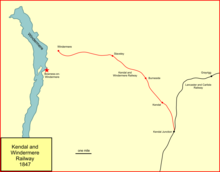
The original line was double, with run-round facilities at Windermere but it was later singled and the station moved a allow a supermarket to be built on the original site.
P is for Porthmadog
Terminus or starting point for both the Ffestiniog and Welsh Highland railways. The station buildings were constructed around 1878/79 but there have been improvements since the revival of the railways in the 60’s and since.
Latest addition was to widen the Cob to add a new platform for the use of the WHR. The larger box in my photo is the new signal box. From the station the FR crosses the cob, past the works at Boston Lodge and on to Blaenau Ffestiniog (2nd picture). The WHR crosses the main street by the side of the station on its way to Caernarvon (3rd picture).
Another great asset of the station is Spooner’s Bar, named after James Spooner and family who were involved in the formation and development of the Ffestiniog. an excellent selection of local real ales is always available.
Q is for Queensferry.
North and South Queensferry are the villages on either side of the Forth Bridge. North has a station by that name but South is served by Dalmeny Station. The ferry in the name ceased to operate in 1964 when the Forth Road Bridge was opened. That too has been replaced by a new bridge as the original could no longer cope with modern traffic.
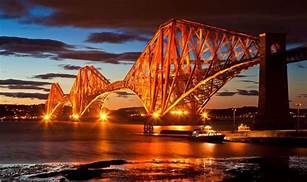
The rail bridge was constructed over an eight year period from 1882 and is a cantilever design. It was the first such structure in steel and was designed to avoid the problems of the Tay Bridge which had collapsed some 3 years earlier.
The old adage about ‘painting the Forth Bridge’ meaning starting again when you finished was never strictly true as there was always a maintenance crew and some areas were done more often than others.
The last repaint in 2011 is now supposed to last 20 years.
R is for Ramsbottom and Rawtenstall.
These are two stations on the East Lancashire Railway, Rawtenstall being the northern terminus of the 12 mile run.Passenger services ceased in 1972 but coal continued for another 8 years. The preserved line re-opened in part in 1987 and the extension to Heywood in 2003.
I have travelled on it twice, both times a full return from Bury. The station at Heywood was added later.
The line operates a wide range of steam, diesel, and railcar services. Bury was also the home of Ian Riley Engineers, well known for their expertise with steam traction. They have also moved to Heywood.
S is for Sheffield
When I was a train-spotting youngster there were two main line stations in Sheffield being Midland (which still remains) and Victoria.
The latter was on the old Great Central line from Chesterfield and then was electrified through the Woodhead Tunnel to Manchester London Road. The power was 1500v DC and locomotives were changed at Victoria between steam and electric. Passenger services stopped calling in 1970 and the station demolished in 1989.
Sheffield Midland was built in 1904 and is now the only mainline station in the centre.
The prestigious train service that has run for many years is the Master Cutler named after Sheffield industry. Having originally run from Victoria it was switched to Midland in 1968 has had various forms of traction. It runs early morning to London, returning early evening.
The station now has the benefit of a Sheffield Supertram stop just outside.
The pictures are Victoria in 1957, midland today and a Supertram
T is for Totnes Riverside.
The place on the South Devon Railway where I have been volunteering for close on 25 years.
The station has been created from a greenfield site in 1969 to a triple award winning ‘GWR Station’ Most of the buildings have come from other parts of the GWR area.
You can read a summarised version of the first 50 years of the station in my blog:- beersteamtoastedteacakes.com/2020/06/10/totnes-50-years/
As I write this the station and all its associated wagons are ‘mothballed’ due the the current crisis but we hope to be back there soon.
Some of the buildings are in the pictures below.
U is for Underground – Overground. (not the Wombles!)
I have travelled on the Underground in London thousands of times but rarely bothered to photograph. The map below is the modern version of that originally designed by Harry Beck in 1931, but now including the Overground, Docklands (see picture), Trams etc.
Personally I really enjoy the docklands system both the trains and the views. Of course there are other underground systems in the UK, particularly the ‘Clockwork Orange’ in Glasgow, and parts of Newcastle Metro and Merseyrail all of which I have travelled on at least part of the Network.
V is for Valley Lines.
Now under the umbrella of Transport for Wales the Valley lines radiate from Cardiff to destinations such as Merthyr Tydfil, Treherbert, Barry, Maesteg and Cardiff Bay.
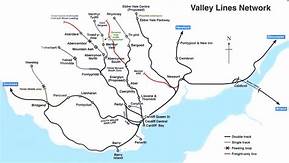
A few years ago David Kelland and I attempted to do as many lines as possible in one day. There were not as many re-opened then but we didn’t complete. We did of course go past Barry – the graveyard and saviour of many steam locos. Few were left by then.
There is supposedly great investment in track. electrification and rolling stock but they have still occasionally used loco haulage such as the class 37 below.

W is for Welshpool and Llanfair Light Railway
This 2ft 6in narrow gauge railways runs from Welshpool (Y Trallwng in Welsh) to Llanfair Caereinion a distance of 8.5 miles.
Originally the line ran from the centre of Welshpool but latterly has run from a new station at Raven Square. It opened in 1903 and closed in 1956. It was re-opened in stages from 1963 as a preserved railway.
Two of its locomotives – No 1 Earl and No 2 Countess are original locomotives built for the line by Beyer Peacock on 1902. Under GWR and then BR they were numbered 822 and 823.

X is for Crossing!
There are a number of X shaped flat crossings around the world but the most well known in the UK is at Newark where the East Coast Main Line is crossed by the Nottingham – Lincoln Line (first picture). It is also the last remaining on main lines.
The main line is of course electrified and trains on that are permitted to travel at 100 mph. There are plans to replace it but these a complicated by the proximity of the River Trent.
There is another similar flat crossing at Porthmadog in North Wales where the Cambrian line from Barmouth is crossed by the Welsh Highland Narrow Gauge near Porthmadog Station. The second image shows a WHR Garratt crossing the standard gauge line.
Y is for York
York is undoubted one of the best cities in the UK and its station is equally grand with its curved platforms and overall roof. first photo is modern, the second in the days of steam.
The original York Station built in 1841 was inside the city walls and entailed a hole being made in the walls and also reversing of all trains.
The current station outside the walls was completed in 1877 and is a Grade II* listed building. The adjoining Royal Station hotel outside the station was opened in 1878.
Apart from through trains under (at the moment) the LNER banner between London Kings Cross and Edinburgh, services also go to Scarborough, Sheffield, the north East and other parts of Yorkshire.
Outside, the York Tap – a conversion of Victorian tearooms – is a splendid real ale bar.
Z is for Zeal Tor Tramway.
Always difficult to find a Z but fortunately Dartmoor has the remains of this tramway – also called Red Lake Tramway.
It was built around 1847 to carry peat from Red Lake to the naphtha works at Shipley Bridge. 4 miles long it was constructed with granite sets, with wooden rails. It did not last very long but was later used in the 1870’s for moving china clay.
If you walk from Shipley Bridge in the Avon Dam area you can still see remains.
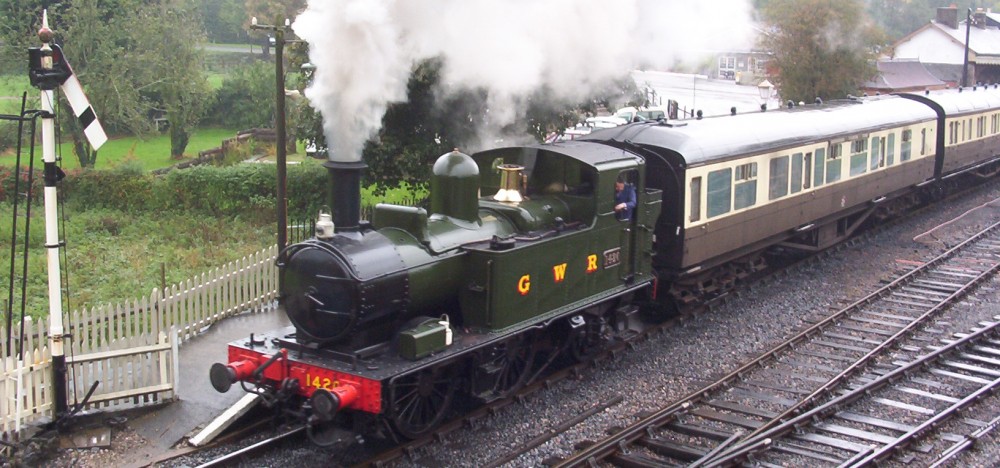








































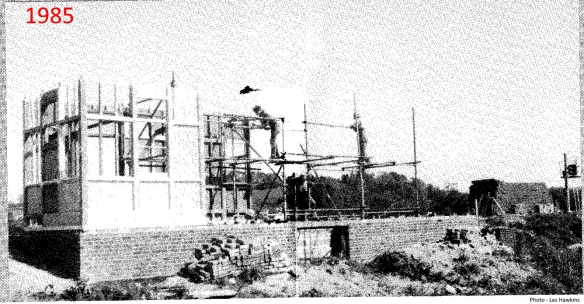



 Station is now renamed
Station is now renamed 





